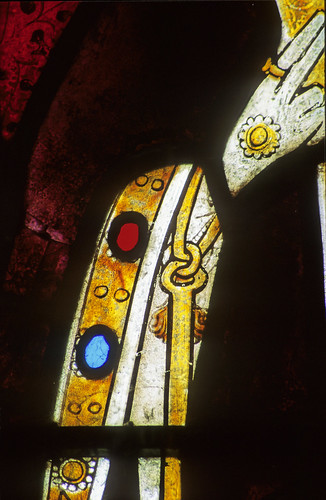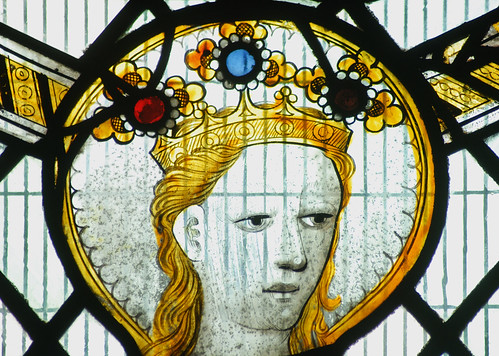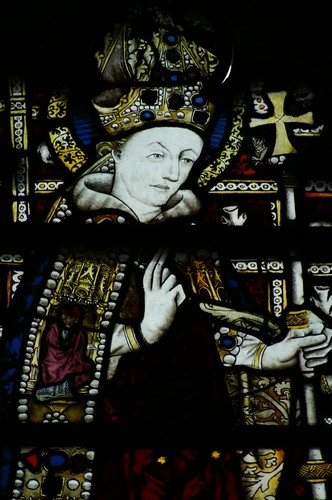An expensive medieval glazing technique.

I want to draw your attention to an interesting and innovative glazing technique that was developed in the fifteenth century. In many high status glazing schemes of this period, glaziers developed a method of leading-in pieces of coloured glass into a ground of white glass. This allowed them to add coloured 'jewels' to vestments and mitres, as in the examples above from St Mary's Warwick. Holes were carefully drilled by hand in the glass using a metal grozing iron and then the glass 'jewels' were leaded into position. Every time a hole was drilled in this manner, there was the risk of breaking the glass beyond repair and of course when multiple holes were drilled, as in the case of the mitre on the head of Thomas of Canterbury at St Mary's Warwick, that risk was higher still.
Gordon Plumb has one or two good examples of this technique on his Flickr photostream:
Stockerston, Leicestershire. Copyright Gordon Plumb.
Browne's Hospital, Stamford. Copyright Gordon Plumb
Browne's Hospital, Stamford. Copyright Gordon Plumb
A note on the glass at St Mary's Warwick. The glass illustrated is in the east window of the Beauchamp chapel, the chantry dedicated to Our Lady, built by Richard Beauchamp, Earl of Warwick. The glass was installed in the 1450s and was the work of John Prudde the royal glazier. Prudde is believed to have charged 2 shillings per square foot for the glass, making it among the most expensive glass of the period.

Comments